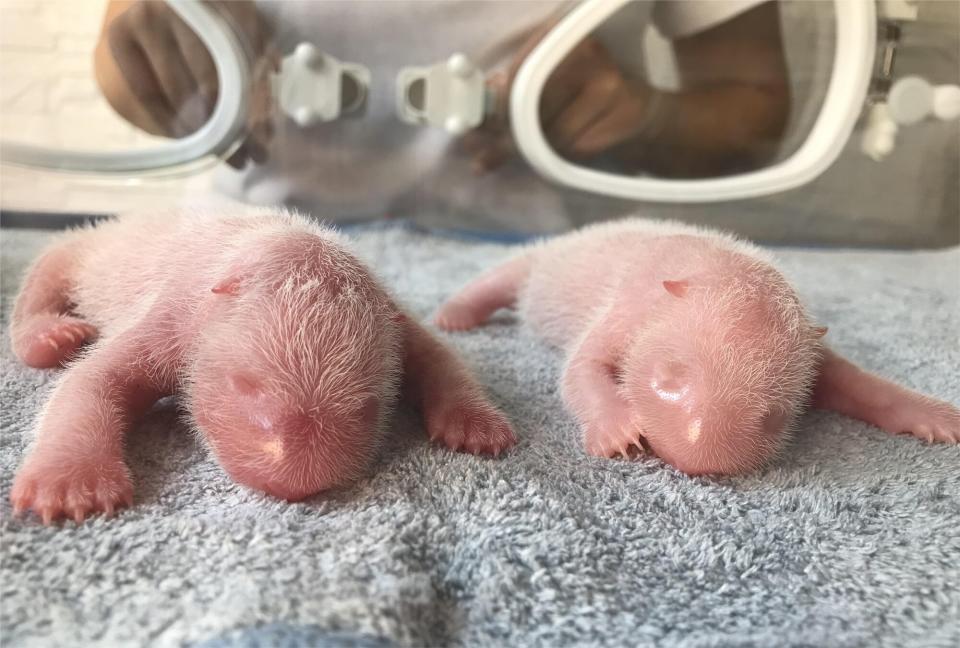Giant Panda Twins Born in China Offer Much-Needed Hope for the Future

A pair of giant panda twins born in a breeding center in northwestern China on Tuesday have become a sign of hope for the vulnerable species.
The two cubs, one male and one female, were born at the Qinling Panda Research Center located in the Shaanxi province, Associated Press reported. They are the second set of twins for mom Qin Qin ,who previously gave birth to two females in 2020.
The cubs are also the second set of twins born in the center this month, AP reported, after another female, named Yong Yong, gave birth in early August.
RELATED: Red Panda Gives Birth to 'Miracle' Cub Nicknamed 'Little Red' After Death of Partner
The father of the twins has not been revealed, AP added, giving rise to the belief that Qin Qin may have been artificially inseminated. The process is regularly used for pandas in China as they tend to reproduce so rarely in the wild.

Xinhua/Shutterstock
RELATED: California's Oakland Zoo Welcomes Newborn Southern Pudu, the World's Smallest Deer
It is partly thanks to this and wider conservation efforts that in 2021 it was announced that giant pandas were no longer considered an endangered species.
Chinese officials made the decision to change that status after the number of giant pandas in the wild surpassed 1,800. The species was then reclassified from "endangered" to "vulnerable," according to NBC News.
Never miss a story — sign up for PEOPLE's free daily newsletter to stay up-to-date on the best of what PEOPLE has to offer, from juicy celebrity news to compelling human interest stories.

Xinhua/Shutterstock
In recent years, the Chinese government has created more than 50 panda reserves to increase the giant panda population, per the World Wide Fund for Nature. The Wildlife Protection Act, which went into law in 1989, also banned panda poaching.
"China has established a relatively complete nature reserves system," Cui Shuhong, head of the Ministry of Ecology and Environment, said at a press conference, reported CNN. "Large areas of natural ecosystems have been systematically and completely protected, and wildlife habitats have been effectively improved."
RELATED: Milwaukee Zoo Giraffe Gives Birth to Calf in Front of Guests After Labor Progresses Quickly
Despite this, pandas continue to face "severe threats from humans," per the WWF.
"Infrastructure development (such as dams, roads, and railways) is increasingly fragmenting and isolating panda populations, preventing pandas from finding new bamboo forests and potential mates," according to the organization.
Maintaining the survival of pandas is also an important key to protecting several other "umbrella species," the WWF added.
"When we protect pandas, we invariably protect other animals that live around them, such as multicolored pheasants, the golden monkey, takin, and crested ibis," the WWF continued.
"Pandas also bring sustainable economic benefits to many local communities through ecotourism."

